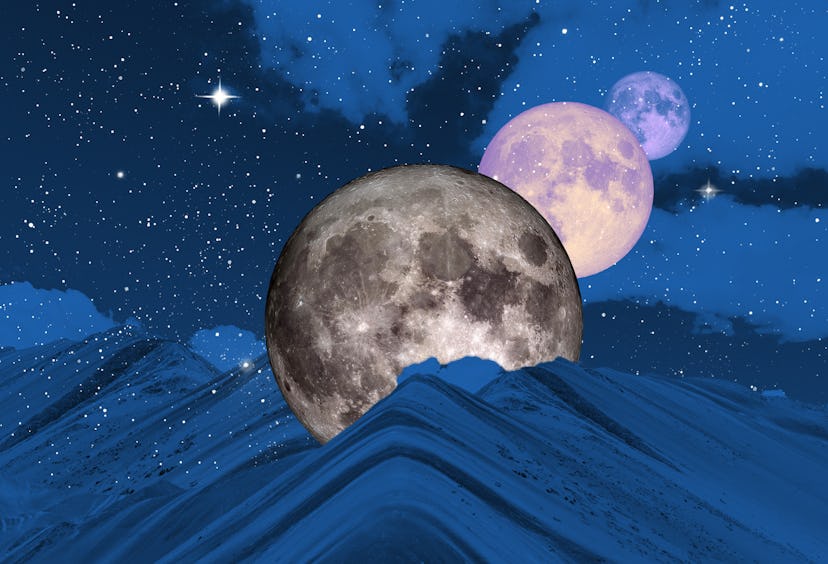Astrology
How To See The Lunar Eclipse On May 15-16, 2022
Most of the continental U.S. will catch a glimpse.

Depending on where you live, between the late hours of May 15 and the wee hours of May 16, the May full moon will take on a rusty red appearance as it enters the Earth’s shadow in 2022’s first total lunar eclipse. While a slight reddish tint on the moon’s surface isn’t a complete anomaly — atmospheric debris can create the illusion of orange or red shading on the moon at any time — an intense, blood red moon only occurs when it’s in the Earth’s shadow in a total lunar eclipse. Depending where you are in the U.S., you should be able to see the lunar eclipse during the May 2022 full flower moon, or at least a part of it.
Lunar eclipses typically occur twice a year, so if you accidentally snooze through this one, you can catch the next on Nov. 8. That said, you’ll want to set an alarm to view this spring’s spectacle because it is a Scorpio total lunar eclipse, which hasn’t occurred since April 2013. Also on the forecast is Mercury retrograde, making this particular moon all the more, well, mercurial. Astrologically speaking, you can expect the eclipse to usher in surprising hidden truths, says astrologer Lisa Stardust. “This will be a time in which secrets are exposed, due to the lunar eclipse, and in an unpredictable way. Mercury retrograde may keep the tea flowing and pouring. However, it could take a longer time for us to see what the actual truth of the matter is,” she tells Bustle. “Rather than react impulsively, take a step back and try to examine all of the facts of the matter.”
Astronomically speaking, the lunar eclipse will be quite the show-off. Per Space.com, it will be visible from North and South America, Europe, Africa, the Middle East, most of the Pacific, and even Antarctica, though not everyone will see its totality (aka, the hourish when it’s blood-red).
Here’s everything you need to know to ensure you don’t miss the special sight.
When Is The Lunar Eclipse?
The eclipse will start on May 15 at 10:28 p.m. ET (7:28 p.m. PT), reaching its maximum on May 16 at 12:11 a.m. ET (9:11 p.m. PT). It will end at 1:55 a.m. ET (10:55 p.m. PT). The penumbral eclipse, meaning when the very outer edges of Earth’s shadow are cast on the moon, will begin about an hour earlier and end about an hour after the partial eclipse.
Where Can You See The Lunar Eclipse From?
Per NASA, viewers in the continental U.S. and Central and South America should be able to see most of the total lunar eclipse, assuming they look up between 10:30 and 2:00 a.m. (Sorry, Alaska and Hawaii.) NPR says that watchers on the west coast of the U.S. will see the moon closer to the horizon, rather than high in the sky, so try to get somewhere where your view won’t be blocked. Per the Independent, the sky will darken during totality (aka, when the moon is fully in Earth’s shadow), so you should be able to see other celestial features like the Milky Way, too. If you aren’t within the path of the lunar eclipse, you can stream it live via NASA.
Is It Safe To Look At A Lunar Eclipse?
Unlike solar eclipses, lunar eclipses have no effect on the naked eye. (You’re looking at the full moon, not directly into the sun, after all.) Not only is it safe to look at a lunar eclipse, you can use binoculars, a telescope, or zoom in with a digital camera to get a better view.